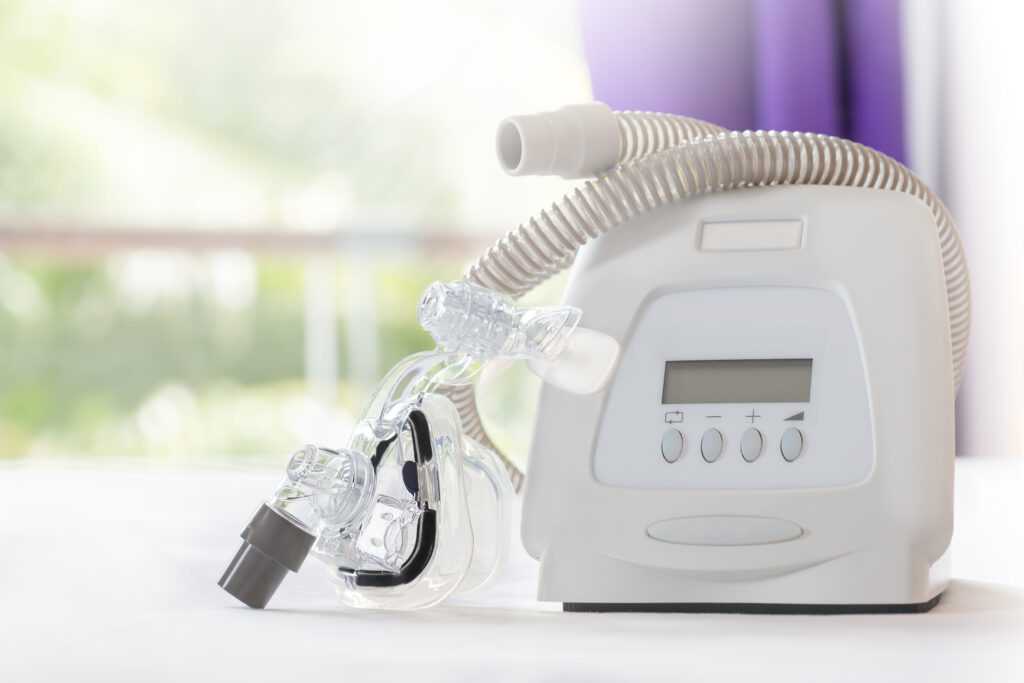
The incidence of obstructive sleep apnea syndrome (OSA) is estimated to be 25% in the adult population. That’s one-quarter of adults who are at risk for the consequences of the disorder, including fatigue, high blood pressure, heart disease, type 2 diabetes, and more. And, although CPAP, the most common treatment for sleep apnea typically reduces the presentation of these symptoms and complications and improve sleepiness, residual sleep disordered breathing (SDB), or some level of sleep apnea events despite the use of CPAP, can still occur. For example, if patients suffer from severe sleep apnea with 35 events per hour aka AHI (Apnea Hypopnea Index) and they use of CPAP reduces the events to 12 events per hour, it is great relief , but this patient still suffer from mild sleep apnea.
This means that despite the use of CPAP to manage their sleep apnea, patients with SDB may not achieve the full benefits of their treatment and instead, continue to suffer from symptoms and damage of OSA. Additionally, residual sleep disordered breathing has been associated with reduced CPAP adherence, further complicating treatment.
This makes monitoring and detecting clinically suspected residual SDB vital to ensuring adequate treatment in patients with OSA vital for optimal and effective patient care.
CPAP Machines Subject to Error
Unfortunately, existing practice is to rely on the CPAP machines themselves in order to detect residual breathing issues, since these machines utilize proprietary algorithms to quantify respiratory events and detect and report residual or untreated apneas.
However, recent data shows that for both fixed and auto-adjusting CPAP machines, of multiple leading brands, this quantification may be subject to significant error.
This is a fact that is glaringly evident when patients with acceptable CPAP data present with new or even worsening symptoms and comorbidities of OSA, signs highly associated with residual sleep disordered breathing.
Accurate Detection of SDB
That’s why research reported in the Journal of Clinical Sleep Medicine set out to determine if there was a better, more accurate way to monitor for and detect residual SDB in patients on CPAP for obstructive sleep apnea.
Patients included in the study were actively using CPAP and had an apnea-hypoxia index (AHI) of five or fewer event per hour on their CPAP data report. Yet each was clinically suspected of being inadequately treated for their apnea.
Clinical criteria that led to a suspicion of SDB included:
- Weight gain of more than 10 pounds
- Worsening or persistent daytime sleepiness
- Poor or worsening sleep quality
- Recurrent apneas
- New or worsening comorbidities such as hypertension or atrial fibrillation
Patients next underwent a single night of home sleep apnea testing using Itamar Medical’s WatchPAT® 200, simultaneous with CPAP use at the usual prescribed settings.
What is WatchPAT®️?
WatchPAT® is an innovative diagnostic Home Sleep Apnea Test (HSAT) that utilizes the peripheral arterial tone signal. The device measures up to 7 channels (PAT® signal, heart rate, oximetry, actigraphy, body position, snoring, and chest motion) via sensors on the wrist, chest and finger. And WatchPAT provides AHI and other indices based upon True Sleep Time as well as Sleep Staging and is clinically validated with an 89%1 correlation to polysomnography (PSG).
The Results
After simultaneous WatchPAT and CPAP monitoring of 100 patients, divided into two groups with similar mix of age, sex, and body mass index, participants were divided into two groups:
- Group 1: 52 patients with similar CPAP AHI and WatchPAT AHI (5 or fewer events/h)
- Group 2: 48 patients with s WatchPAT AHI greater than their CPAP AHI (with median AHI difference? significantly greater at 11 events/h)
This means that WatchPAT AHI was significantly higher than the AHI detected with CPAP in nearly half of patients with clinically suspected residual sleep disordered breathing.
Additionally, WatchPAT revealed instances of moderate or severe REM AHI in both groups 1 and 2, which CPAP machines cannot detect, as well as instances of significant oxygen desaturation index and significantly lower nadir oxygen saturation in group 2.
The Conclusion
Overall, the researchers concluded that WatchPAT detected additional respiratory events beyond those detected by the CPAP machines, including rapid eye movement-related apneas, respiratory effort-related arousals, and hypoxemia.
The results of this study mean that physicians treating patients with obstructive sleep apnea, when clinical symptoms are present, can no longer rely upon CPAP machines alone to ensure detection of residual SDB.
Instead, simultaneous monitoring with home sleep apnea testing, such as WatchPAT, even for patients with a normal CPAP AHI is necessary to ensure adequate treatment and prevent the long-term complications of sleep apnea.
References:
1- Use of the WatchPAT to detect occult residual sleep-disordered breathing in patients on CPAP for obstructive sleep apnea, Epstein et. Al, Journal of Clinical Sleep Medicine, Vol 16, No 7
